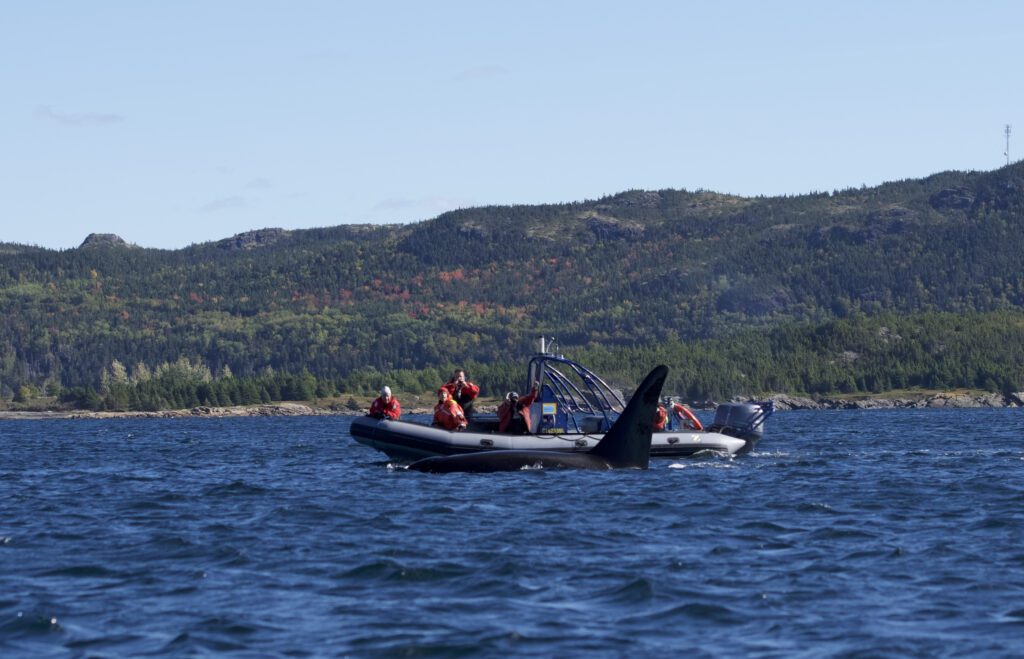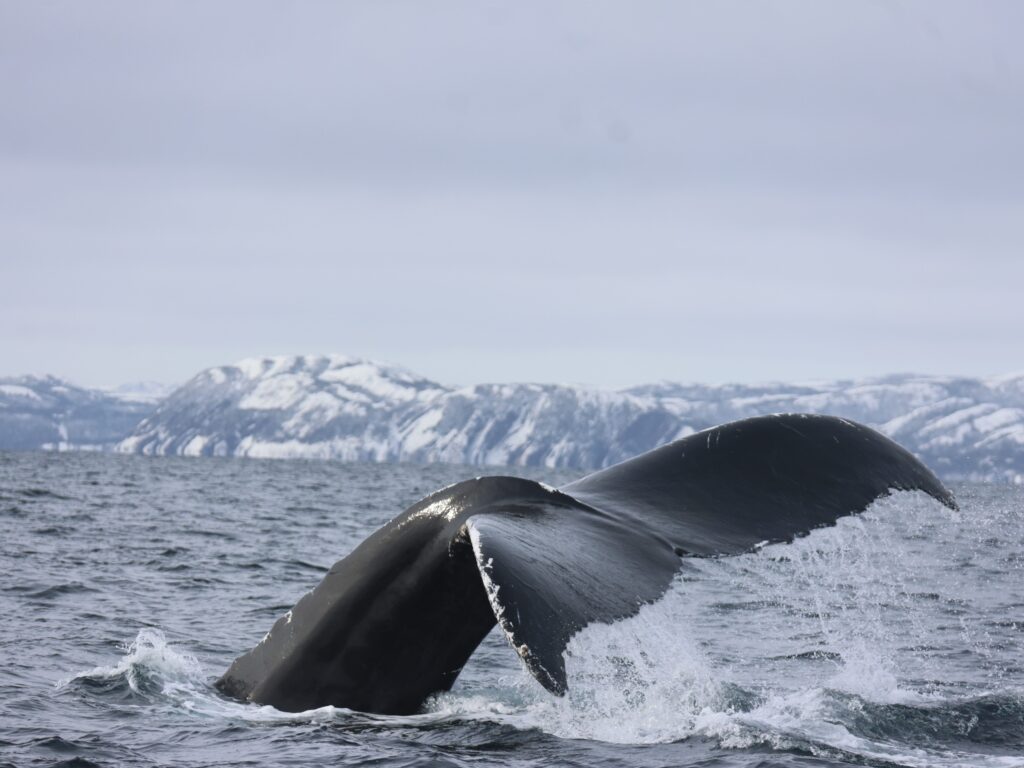When is the best time to see whales in Newfoundland?

Are you curious about when is the best time to see whales in Newfoundland? In our charming town of Trinity, nestled on the coast of eastern Newfoundland, every season brings its own magic to the waters of the Atlantic Ocean. If you’re planning a whale watching adventure with us, timing is everything. Join us as we explore the best times of the year to witness the majestic giants of the sea in their natural habitat, ensuring an experience that will leave you in awe of nature’s wonders.
Spring Awakening
As winter loosens its grip on Newfoundland, the arrival of Spring marks the beginning of an exciting season for whale watching. From mid May to early June, the waters of Trinity Bay become alive with activity as humpback whales travel from their winter breeding and calving grounds in warmer waters to the rich feeding grounds of the North Atlantic. Minke whales, fin whales and sperm whales also move towards Newfoundland’s coast in search of abundant food sources.

Spring is often iceberg season in our region as well, allowing adventurers the unique and incredible opportunity to potentially witness both icebergs and whales during the same excursion. Read more about viewing icebergs in Newfoundland here.
Summer Spectacle
The summer months, from June to August, are considered the peak of whale watching season, and are typically the best time to see whales in Newfoundland. The waters are teeming with life, creating a playground for various whale species. A summer day on the ocean in Newfoundland is sure to excite. You could see humpback whales, fin whales, minke whales, sperm whales, and pilot whales, along with various species of dolphin, porpoises, and seals. Birdwatchers can spot various seabirds, including puffins, eagles, and bald eagles. Our expert guides will lead you along the spectacular geology of our rugged coastline, with its wildflowers, sea stacks, caves, and 500 million year old history.
Eastern Newfoundland experiences a cool maritime climate, heavily influenced by the surrounding Atlantic Ocean. The summer weather in this region is characterized by mild temperatures, refreshing sea breezes, and a mix of sun and occasional precipitation. Stay tuned for our upcoming blog post on what to wear on your whale watching adventure!
Fall Fins and Flukes
As summer transitions into fall, the whale watching spectacle in Trinity Bay continues. From late August to October, the whales linger in our region, preparing for their southward migration. The fall season offers a more tranquil atmosphere. The feeding at this time is focussed on squid so a lot of faster species move into the area including super pods of dolphins, minke, fin and pilot whales as well as bluefin tuna. At this time humpbacks are still present but there are not as many as earlier in the season.
The changing colours of the coastal landscape provide a stunning backdrop to your whale watching excursion.
Winter Wonder
While winter is not traditionally the peak season for whale watching, it is still possible to catch a glimpse of some whale species in the waters around Trinity Bay. Certain species, such as the minke whale, may be present year-round. Additionally, winter brings its own charm to Trinity, with the possibility of spotting other marine life, such as seals and seabirds. Sometimes a couple of humpbacks taking a year off from breeding will visit at this time.
We invite you to join us for an adventure filled with marine marvels, natural beauty, and memories to last a lifetime! Book your whale watching tour here.
This entry was posted in Sea of Whales Blog by Sea Of Whales Adventures. Bookmark the permalink.
